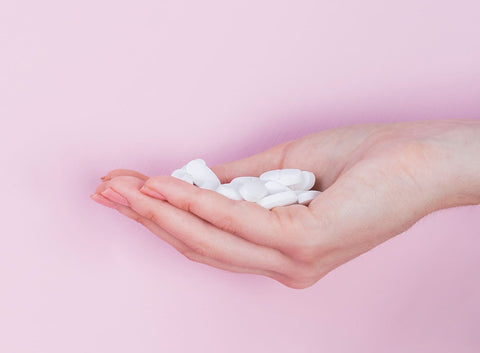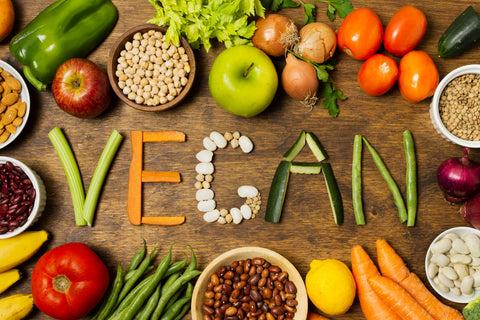What is Blood Pressure?
Blood pressure (BP) is the force of blood pushing against the walls of your arteries as the heart pumps it throughout your body. It is typically measured in millimetres of mercury (mm Hg) and is expressed as two values:
-
Systolic Pressure: The higher number represents the pressure in your arteries when your heart contracts (beats) and pumps blood into the circulation. This is the maximum pressure.
-
Diastolic Pressure: The lower number represents the pressure in your arteries when your heart is at rest or between beats. It is the minimum pressure.
A normal BP reading is usually around 120/80 mm Hg, where 120 represents the systolic pressure and 80 represents the diastolic pressure.
Blood pressure is an essential component of the circulatory system, and it plays a crucial role in delivering oxygen and nutrients to all parts of the body.
It is regulated by various factors, including the force of the heart's contractions, the volume of blood, the flexibility and diameter of the arteries and the overall health of the cardiovascular system.
However, it's important to note that what is considered healthy blood pressure can vary from person to person and healthcare professionals take individual factors into account when assessing BP.
Low BP (hypotension), on the other hand, occurs when the pressure is too low, which can lead to dizziness, fainting, and inadequate blood flow to the body's organs and tissues.
High BP (hypertension) occurs when the force of blood against the artery walls is consistently too high. It can put extra strain on the heart and blood vessels, increasing the risk of cardiovascular problems.
Monitoring blood pressure is essential for assessing overall health and the risk of cardiovascular diseases.
High blood pressure is a significant risk factor for conditions like heart disease, stroke, and kidney problems. Regular BP measurements and appropriate lifestyle changes or medications, if necessary, can help manage BP and reduce the risk of related health issues.

What Causes Low Blood Pressure
Low blood pressure, also known as hypotension, can be caused by various factors and underlying health conditions. Some of the common causes include:
Inadequate fluid intake, dehydration or excessive loss of fluids lead to low blood pressure.
Some medications, such as diuretics (water pills), certain antihypertensive drugs, and medications for certain conditions, can cause low blood pressure as a side effect.
Heart conditions like bradycardia (slow heart rate), heart valve problems, and heart failure can reduce the heart's ability to pump blood effectively, resulting in low blood pressure.
Endocrine disorders, hormonal imbalances, such as hypothyroidism, adrenal insufficiency, and diabetes, can affect BP regulation.
Nutritional deficiencies, such as a lack of Vitamin B12, folic acid, and iron, can lead to anaemia, which can, in turn, cause low blood pressure.
Low blood pressure can be common during early pregnancy.
Certain neurological conditions, like Parkinson's disease and autonomic nervous system disorders, can affect the body's ability to regulate BP.
Orthostatic hypotension is a specific type of low blood pressure that occurs when you stand up from a sitting or lying position. It may be caused by dehydration, certain medications or autonomic nervous system dysfunction.
Anaphylaxis, a severe allergic reaction, can lead to a rapid drop in BP.
Significant blood loss can cause a drop in blood pressure.
Sepsis, a severe infection, can cause a dramatic drop in BP known as septic shock.
Neurocardiogenic syncope is a type of fainting disorder that can result in low blood pressure, often triggered by emotional stress, dehydration, or prolonged standing.
It's important to note that some individuals naturally have lower blood pressure without any underlying medical condition, and this is not necessarily a cause for concern.
However, if you experience symptoms of low blood pressure, such as dizziness, fainting, fatigue, or confusion, it's essential to consult a healthcare professional to determine the underlying cause and receive appropriate treatment if necessary. They can conduct diagnostic tests and provide guidance based on your specific situation.
It's essential to regularly monitor your BP, maintain a healthy lifestyle, and, if necessary, work with a healthcare professional.
Lifestyle modifications, such as a balanced diet, regular exercise, weight management, and stress reduction, can be effective in controlling hypotension. In some cases, medication may be prescribed by a healthcare provider to help manage BP.

Foods for Low Blood Pressure
Low blood pressure is a reading of 90/60 mm Hg or lower. If you have low blood pressure and are looking for foods that may help raise it, consider the following options:
Increasing your salt intake can help raise BP, as salt helps retain water in the body. However, it's important to do this in moderation and consult with a healthcare professional, especially if you have underlying health issues. Aim for a moderate increase in salt, as excessive salt can lead to other health problems.
-
Dehydration can contribute to low blood pressure, so staying well-hydrated is important. Drink plenty of water, herbal teas and clear broths to maintain proper hydration.
-
Caffeine, found in coffee, tea, and some sodas, can temporarily raise BP. However, be cautious with caffeine intake, as excessive consumption can lead to other health issues and may not be suitable for everyone.
-
Foods naturally high in sodium, like olives, pickles, and some processed foods, can help increase BP. Again, consume these in moderation and be mindful of their overall nutritional value.
-
Liquorice contains a compound called glycyrrhizin, which can help raise BP. However, excessive liquorice consumption can lead to other health problems, so it should be used in moderation and under the guidance of a healthcare professional.
-
Some studies suggest that beetroot juice may help increase BP due to its nitrate content. Nitrate is converted into nitric oxide in the body, which can dilate blood vessels and potentially raise BP.
-
Foods rich in protein, like lean meats, poultry, fish, and legumes, can help maintain BP. Protein helps with blood vessel contraction, which may raise blood pressure.
-
While fruits and vegetables are generally healthy, they can also help with low blood pressure, as they provide essential nutrients and can help maintain overall health. Focus on a balanced diet with a variety of fruits and vegetables.
-
Eating smaller, more frequent meals throughout the day can help stabilise BP and prevent drops that occur after large meals.
-
Some people find that ginger can help improve circulation and raise BP. You can consume it as a spice in your food or as ginger tea.
Supplements for Low Blood Pressure
While there are no specific supplements that are recommended to raise low blood pressure, there are some that may help manage and potentially increase BP.
-
Adaptogenic Herbs: Some herbs like Liquorice Root and Ginseng are considered adaptogens and may help regulate BP. However, these should be used with caution and under the guidance of a healthcare professional, as they can have side effects and interact with medications.
-
In some cases, B vitamins, especially Vitamin B12 and Folic Acid, may help improve low blood pressure, particularly if it is related to anaemia.
-
Anaemia can lead to low blood pressure, and in such cases, Iron supplements may be recommended. However, taking iron supplements without a confirmed iron deficiency can be harmful, so it's important to have your iron levels tested before considering supplementation.
Related Articles
Sources
- Low Blood Pressure Diet: Tips to Increase Blood Pressure (healthline.com)
- Low Blood Pressure (Hypotension): Causes, Symptoms, & More (healthline.com)
- Low Blood Pressure Symptoms: How to Raise, Causes, and More (healthline.com)
- Low blood pressure (hypotension) - Symptoms and causes - Mayo Clinic
- Low blood pressure (hypotension) - Diagnosis and treatment - Mayo Clinic
- Smoke-free policies associated with lower blood pressure | ScienceDaily
- Mindfulness-based stress reduction helps lower blood pressure, study finds | ScienceDaily
Any information or product suggested on this website is not intended to diagnose, treat, cure, or prevent any medical condition. Never disregard medical advice or delay in seeking it because of something you have read on this website. Consult your primary healthcare physician before using any supplements or making any changes to your regime.






